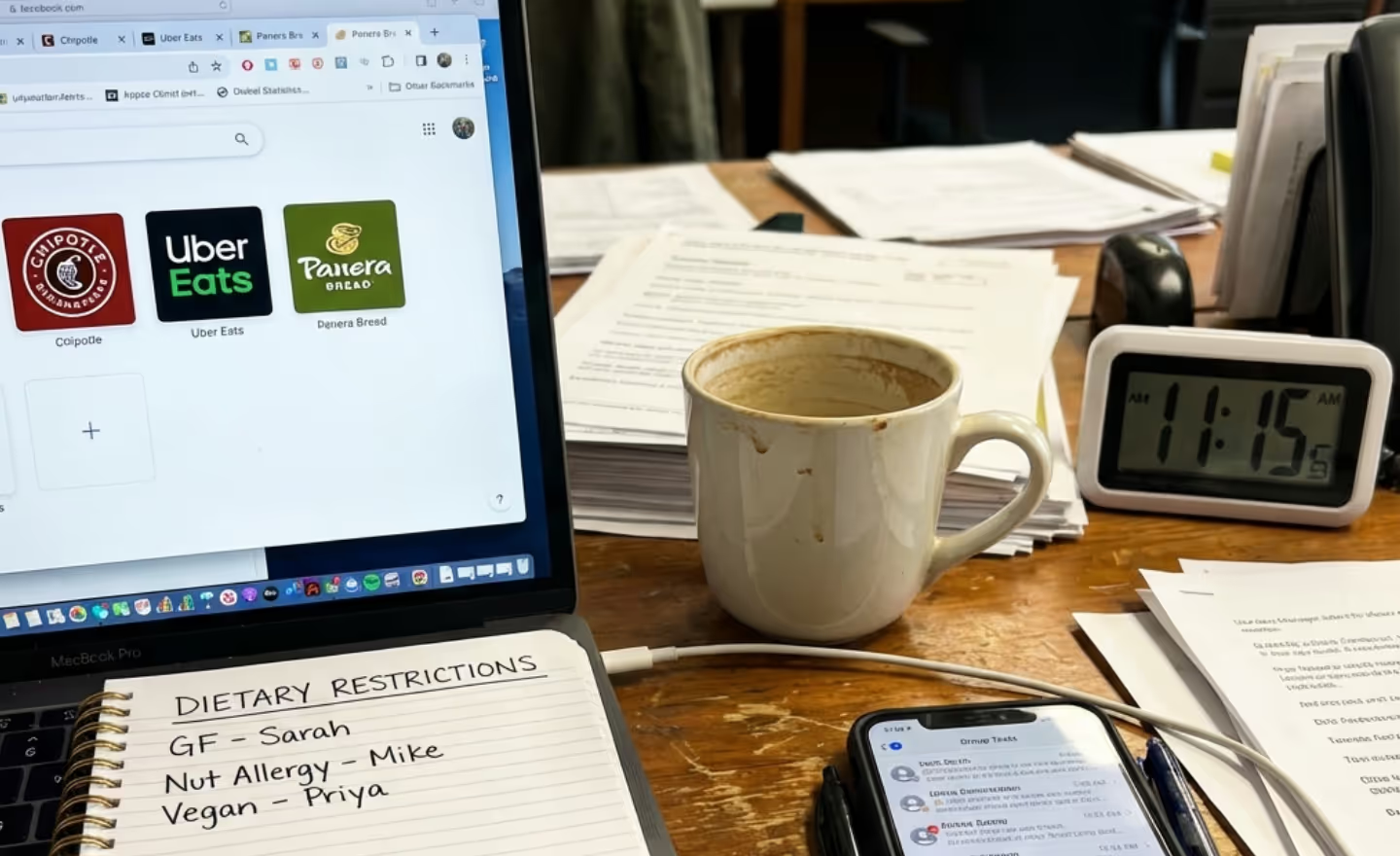Remote work offers flexibility and focus, but it also blurs boundaries and amplifies distractions. The goal is not to pack more hours into your day. The goal is to get better outcomes with the hours you already work. This guide gives you a practical framework to set up your day, protect deep work, collaborate intentionally, and maintain energy so you can deliver consistently without burning out.
1. Set Up Your Day for Success
A productive remote day starts before you open your inbox.
- Define your Top 3 outcomes. Focus on results, not tasks. For example, “Finalize Q4 roadmap” instead of “Work on roadmap.”
- Block out some focus time on your calendar. Use mornings for deep work and afternoons for collaboration and admin.
- Create a start up ritual that takes ten minutes. Scan your calendar, confirm your Top 3, reset your workspace, and review blockers.
- Try to set up a distinct work zone. Make sure you have decent lighting, maintain an ergonomic setup, and display a visible in focus indicator to signal availability to others who may be at home.
Pro tip: Put your Top 3 on a sticky note in your line of sight. When context switching creates a distraction (or having an ADHD moment like myself), you glance back and recalibrate.
2. Protect Your Focus Time
Deep work requires proactive defense.
- Schedule one or two deep work blocks of 90 to 120 minutes each day. Label them “Focus. Do not schedule” and include the deliverable.
- Silence the noise. You can even try turning off non critical notifications and batch Slack and email checks at set times.
- Use momentum methods. Try 50 and 10 or 25 and 5 intervals. Stop at the break even if you are in flow. This sustains energy across the day.
- Communicate availability. Use status messages such as “Heads down. Replies by 2 pm” to reduce friction.
Measure it: Track how many deep work blocks you complete each week. Protect them like meetings with your superiors.
3. Collaborate Intentionally
Use synchronous time sparingly and purposefully.
- Default to async for updates. Use synchronous time for decisions, alignment, and ambiguous topics.
- Apply meeting hygiene. No agenda, no meeting. Book 10, 25 or 50 minute slots to create buffers.
- Close every meeting with owners, deadlines, and explicit next steps.
- Practice time zone etiquette. Establish shared overlap windows and rotate meeting times when needed.
Template you can copy:
- Objective. What decision or outcome is needed?
- Inputs. Links, data, and context in advance.
- Roles. DRI (directly responsible individual), contributors, approver.
- Next steps. Owner and due date.
4. Leverage the Right Tools, Not All of Them
Tools should reduce friction, not create confusion.
- Build a core stack. Async docs, project tracker, chat, video, calendar, and a focus timer.
- Standardize where work lives. Decide where briefs, PRDs (product requirements documents), and meeting notes go and stick to it.
- Automate status. Use calendar focus modes and status integrations to broadcast availability.
- Document processes. Create reusable templates for briefs, meeting notes, and retros to keep quality high and speed up ramp time.
Audit quarterly. Remove duplicative apps and clarify conventions. Clarity beats variety.
5. Design Healthy Breaks and Energy Rituals
Productivity depends on energy management as much as time management.
- Take micro breaks every 60 to 90 minutes. Stretch, step outside for a quick stroll, or refill water.
- Protect your eyes with the 20 20 20 rule. Every 20 minutes, look 20 feet away for 20 seconds.
- Add movement anchors. Take short walks after calls and try standing for 15 minutes each hour.
- Use a shutdown routine that takes ten minutes. Log wins, set tomorrow’s Top 3, clear your desk, and disconnect.
Consistency over intensity. Small, reliable habits beat occasional heroic sprints.
6. Eat to Perform: Fuel That Supports Focus
What you eat shapes your afternoon.
- Make or order balanced meals. Combine protein, fiber, and healthy fats to avoid crashes.
- Time your meals. Keep lunch lighter before deep work blocks and heavier meals later.
- Create a hydration habit. Keep water visible and add a recurring reminder if helpful.
Simple plate formula: Half vegetables, one quarter protein, one quarter whole grains or starch, and add healthy fats. Sharebite has a lot of options like these. Schedule a demo to see which restaurants we work with in your area.
7. Communicate Expectations and Boundaries
Alignment prevents rework and stress.
- Publish your working hours, focus blocks, and response time norms.
- Use status messages to set expectations. For example, “Deep work 9 to 11. Replies after 11:15.”
- Create a concise Personal User Manual that covers communication preferences, availability, and feedback style.
- Push back on scope creep. Offer options, trade offs, and clear timelines instead of a hard no.
Make it visible. Link your user manual in your chat profile or pin it in team channels.
8. Measure What Matters
Shift from activity to outcomes.
- Set weekly outcomes. Define OKRs (Objectives and Key Results) or three to five measurable deliverables.
- Track personal metrics. Completed deep work hours, meetings declined or shortened, and context switches reduced.
- Run a team pulse. Use async weekly updates that cover progress, blockers, and one improvement for the coming week.
Adopt a review rhythm. Spend 15 minutes each Friday on a retro. What worked, what did not, and what to try next.
9. Manager’s Corner: How Leaders Enable Remote Productivity
Leaders set the tone.
- Model the behavior. Protect focus time, take breaks, and end meetings on time.
- Codify team norms. Response SLAs, meeting free blocks, and documentation first culture.
- Recognize outcomes. Celebrate shipped work, thoughtful docs, and improved processes.
- Support well being. Encourage real breaks and shared meals to reduce burnout and strengthen team connection. Sharebite helps leaders normalize restorative routines around mealtimes while supporting a culture of belonging.
Tip: Implement a monthly async day where all meetings convert to written updates. Capture learnings in a shared doc.
10. Quick Start Checklist
Use this to put the guide into action today.
- Choose tomorrow’s Top 3 outcomes.
- Block two 90 minute focus windows on your calendar.
- Turn off non critical notifications during focus.
- Convert one status meeting into an async update with a clear template.
- Plan a balanced lunch and schedule two micro breaks.
- Update your status with availability and response time norms.
- End your day with a ten minute shutdown routine.
Conclusion: Sustainable Productivity and Stronger Teams
Remote productivity is not about doing more. It is about doing what matters, consistently. When you design your day, protect focus, and fuel your energy, results follow. When leaders reinforce these habits, especially around restorative breaks and shared meals, teams perform better and feel more connected.






